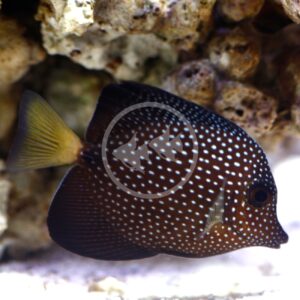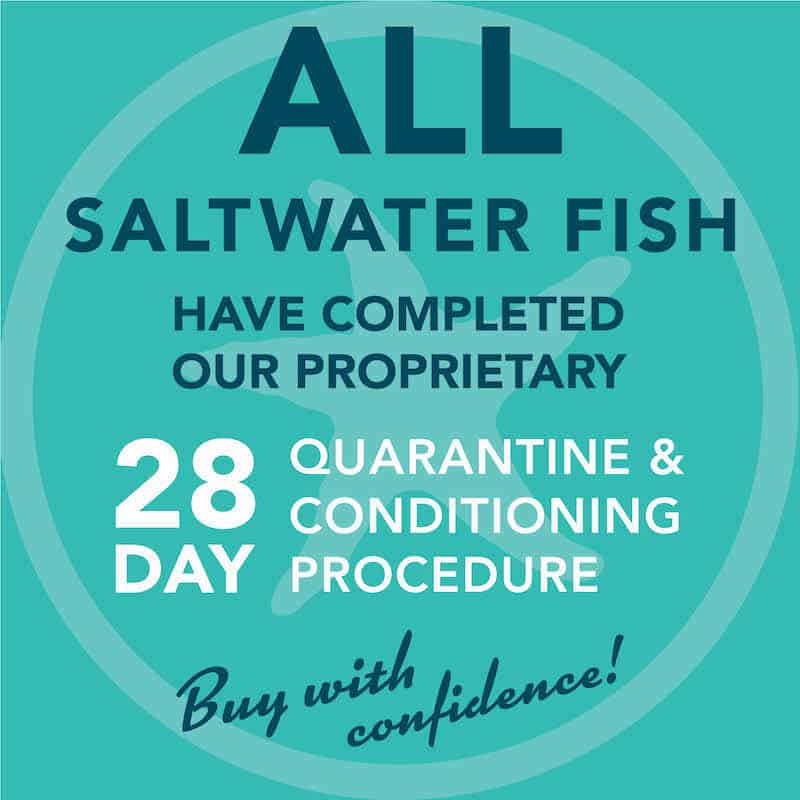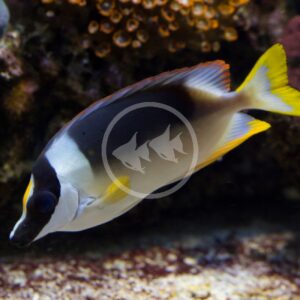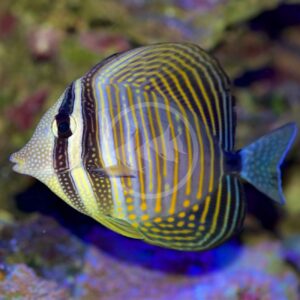

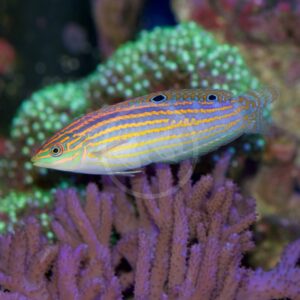
WRASSE – FLASHER YELLOWFIN Paracheilinus flavianalis
$149.99
The Yellowfin Flasher Wrasse is native to the Indo-Pacific, Indian Ocean and Australia. Like all flasher wrasses in the genus Paracheilinus, the Yellowfin flasher wrasse is an attractive, relatively hardy, active and peaceful fish suited for reef aquaria. Male Yellowfin flasher wrasses are brightly colored, having an overall red to orange body with faint-colored horizontal stripes that run the length of it. The orange dorsal fin has two elongated red rays, and the anal fin is bright yellow in which this species gets its name. Female or immature male Yellowfin flasher wrasses have more muted colors and no elaborate dorsal fins. Yellowfin flasher wrasses do best when kept in groups because they are a natural shoaling fish, and this also encourages the male Yellowfin flasher wrasse to showcase their best coloration. Keep one male per aquarium with two or more females. The male Yellowfin flasher wrasse closely resembles both male McCosker’s Flasher Wrasse (Paracheilinus mccoskeri) and male Carpenter’s Flasher Wrasse (Paracheilinus carpenteri), however there are differences in ray number among all three species (McCosker’s = 1; Carpenter’s = 3 or 4) and both latter species do not have the yellow anal fin. Yellowfin flasher wrasses can reach a size of approximately 3″. Note: This species is infrequently available compared to other similar Paracheilinus sp.
Care Level: Moderate
Temperament: Peaceful
Reef Compatible: Yes
General Description: The Yellowfin Flasher Wrasse is native to the Indo-Pacific, Indian Ocean and Australia. Like all flasher wrasses in the genus Paracheilinus, the Yellowfin flasher wrasse is an attractive, relatively hardy, active and peaceful fish suited for reef aquaria. Male Yellowfin flasher wrasses are brightly colored, having an overall red to orange body with faint-colored horizontal stripes that run the length of it. The orange dorsal fin has two elongated red rays, and the anal fin is bright yellow in which this species gets its name. Female or immature male Yellowfin flasher wrasses have more muted colors and no elaborate dorsal fins. Yellowfin flasher wrasses do best when kept in groups because they are a natural shoaling fish, and this also encourages the male Yellowfin flasher wrasse to showcase their best coloration. Keep one male per aquarium with two or more females. The male Yellowfin flasher wrasse closely resembles both male McCosker’s Flasher Wrasse (Paracheilinus mccoskeri) and male Carpenter’s Flasher Wrasse (Paracheilinus carpenteri), however there are differences in ray number among all three species (McCosker’s = 1; Carpenter’s = 3 or 4) and both latter species do not have the yellow anal fin. Yellowfin flasher wrasses can reach a size of approximately 3″. Note: This species is infrequently available compared to other similar Paracheilinus sp.
Diet Requirements: Yellowfin flasher wrasses are carnivores, actively hunting tiny crustaceans (e.g., copepods) throughout the day. A diet consisting of various meaty preparations such as brine shrimp, mysis shrimp, and other mixed frozen foods that contain algae, such as spirulina, will maintain optimal health and coloration. We highly encourage soaking frozen foods in vitamin and fatty acid supplements, as flasher wrasses have very high metabolisms. Multiple, small feedings per day rather than one large feeding can also help and in turn create more of a natural environment for a Yellowfin flasher wrasse as it would feed in the wild. Yellowfin flasher wrasses may also accept high quality flake or pellet foods, which is great for nutritional gaps and variety.
Care Requirements: An established, minimum 30 gallon aquarium is required for a single Yellowfin flasher wrasse. However, a 55 gallon aquarium is preferred and an even larger tank is recommended for a group. A tight fitting lid is a must because these wrasses are known to jump out of aquariums. Yellowfin flasher wrasses enjoy a variety of rock work and crevices to swim through and around while they hunt. Such live rock arrangements can also help to make it feel secure and encourage more outgoing behavior. The Yellowfin flasher wrasse is not tolerable of nitrite or ammonia spikes, and an established tank also offers microinvertebrates and crustaceans that naturally accumulate over time as the aquarium ages for it to prey on. Given their peaceful and timid nature, a Yellowfin flasher wrasse can be easily bullied and therefore should not be kept with overly aggressive species, especially those that can outcompete it in food resources. It is best to add a single, or group, of Yellowfin flasher wrasses before larger or more active fish in order to allow them to acclimate to the environment and begin feeding. If you’re interested in a group, add all individuals simultaneously for the best success, or females altogether first before adding a male. Recommended water conditions, 72-78° F, KH 8-12, pH 8.1-8.4, salinity 1.020-1.025.
Purchase Size: Small: 1-1/2″ to 2″; Medium: 2″ to 2-1/2″; Large: 2-1/2″ to 3″
Note: Your item may not look identical to the image provided due to variation within species. Purchase sizes are approximate.
Dry goods orders are shipped via US Postal Service or UPS to the address provided at checkout based on the selection made in your website shopping cart. Product is carefully packed to help prevent any damage during shipping. Once processed you will receive a shipment notification via email with tracking number, and delivery notification. Please allow 48 hours for processing after your order is placed.
Perishable items (i.e. live plants, refrigerated/frozen foods) are shipped via US Postal Service 2-3 day to the address provided at checkout for a $25.00 flat rate charge. Items are packed with secure packing material and heat, cold, or Cryo packs as needed to maintain safe temperatures during transit. If one or more perishable items are in the shopping cart at checkout the $25.00 perishable shipping charge will automatically appear and need to be selected. Once processed you will receive a shipment notification via email with tracking number. Please allow 48 hours for processing after your order is placed.
Livestock (i.e. fish, invertebrates, coral) are shipped via UPS Overnight to the address provided at checkout for a $55.00 flat rate charge. Livestock is packed in insulated styrofoam boxes with secure packing material and heat, cold, or Cryo packs as needed to maintain safe temperatures during transit. If one or more livestock items are in the shopping cart at checkout the $55.00 livestock shipping charge will automatically appear and need to be selected. Livestock is shipped Monday through Wednesday ONLY (no weekend delivery is available) weather permitting, and we reserve the right to delay shipping until conditions are appropriate for safe arrival. Once your order is placed we will contact you to arrange the best shipping date based on these criteria. Someone must be available to receive the livestock order on the first delivery attempt. Once processed you will receive a shipment notification via email with tracking number. Please allow 48 hours for processing after your order is placed.
For mixed dry goods/perishable & livestock orders items will be shipped via their corresponding shipping methods outlined above. Dry goods will be shipped via US Postal Service or UPS based on your selection and checkout, while livestock will ship via UPS Overnight for a $55.00 flat rate charge. You will receive separate notifications and tracking numbers for the dry goods and livestock. Please note due to different carriers and shipping methods dry goods and livestock may arrive on different days.
Related products
TANG – YELLOW Zebrasoma flavescens
$174.99 – $399.99Price range: $174.99 through $399.99RABBITFISH – MAGNIFICENT FOXFACE Siganus magnificus
$249.99 – $349.99Price range: $249.99 through $349.99

ANGEL DWARF – PYGMY ATLANTIC / CHERUB Centropyge argi
$69.99 – $99.99Price range: $69.99 through $99.99TANG – SAILFIN DESJARDINII Zebrasoma desjardinii
$169.99 – $199.99Price range: $169.99 through $199.99

TRIGGER – HUMU HUMU Rhinecanthus aculeatus
$89.99 – $139.99Price range: $89.99 through $139.99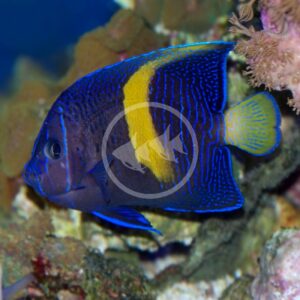

ANGEL – MACULOSUS Pomacanthus maculosus
$254.99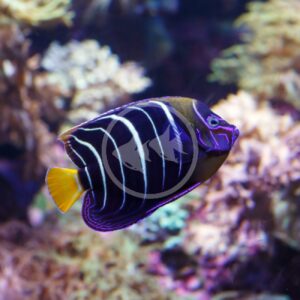

ANGEL – CHRYSURUS Pomacanthus chrysurus
$269.99